Complete Solutions to Electric Field And Motion of chapter ELECTRIC CHARGE, FIELD & FLUX of Class 12 book with complete answers and questions
| Class 12 | PHYSICS |
| Chapter | ELECTRIC CHARGE, FIELD & FLUX |
| A2Z | Electric Field And Motion |
| Number Of Questions | 37 |
| Academic Year | 2023-24 |
The given figure gives electric line of force due to two charges `q_(1)` and `q_(2)`. What are the signs of the two charges ?
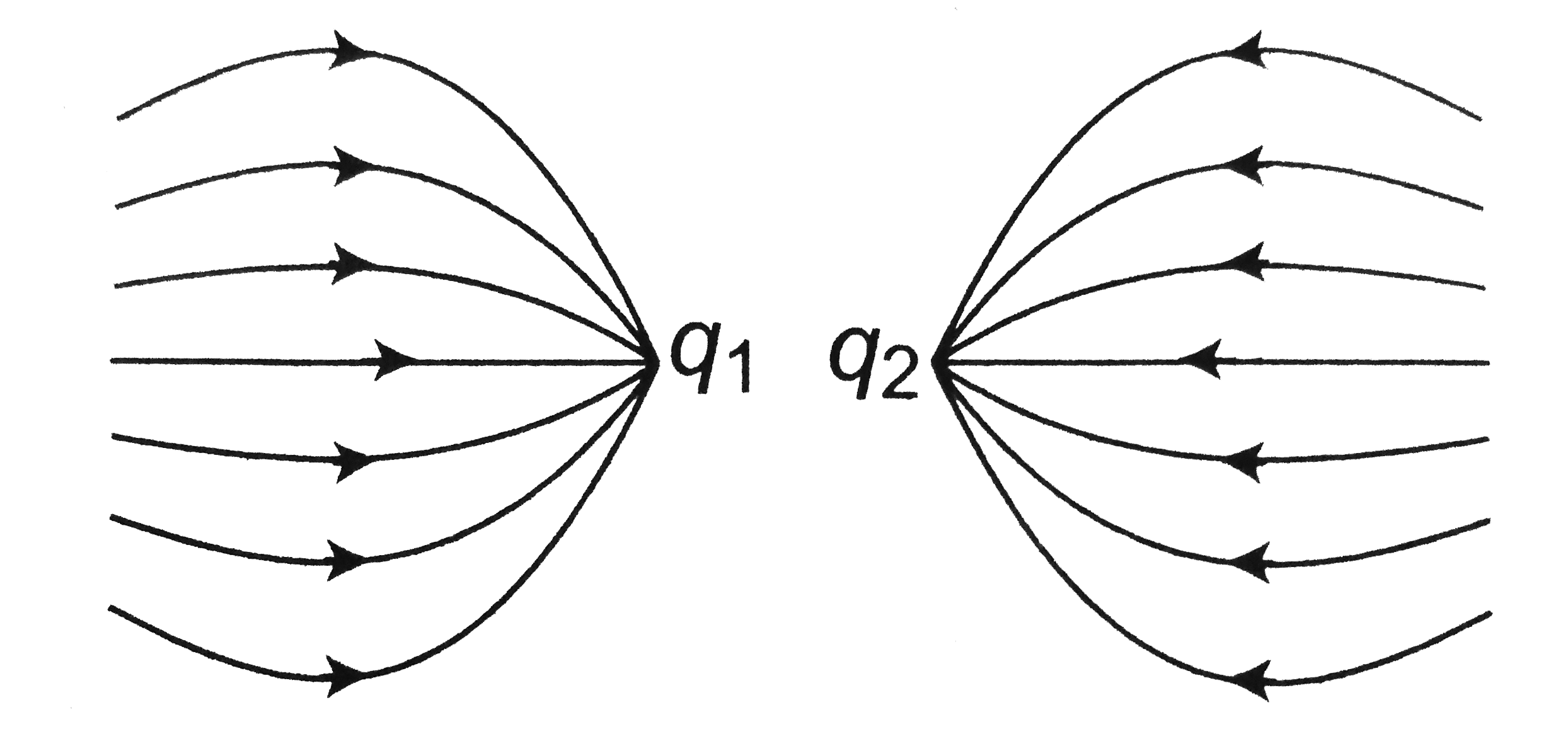
View SolutionConsider the four field patterns shown. Assuming there are no charge in the regions shown, which of the patterns represent a possible electrostatic field?
View SolutionWhich of the following figures correctly shows the top view sketch of the electric field lines for a uniformly charged hollow cylinder as shown in figure?
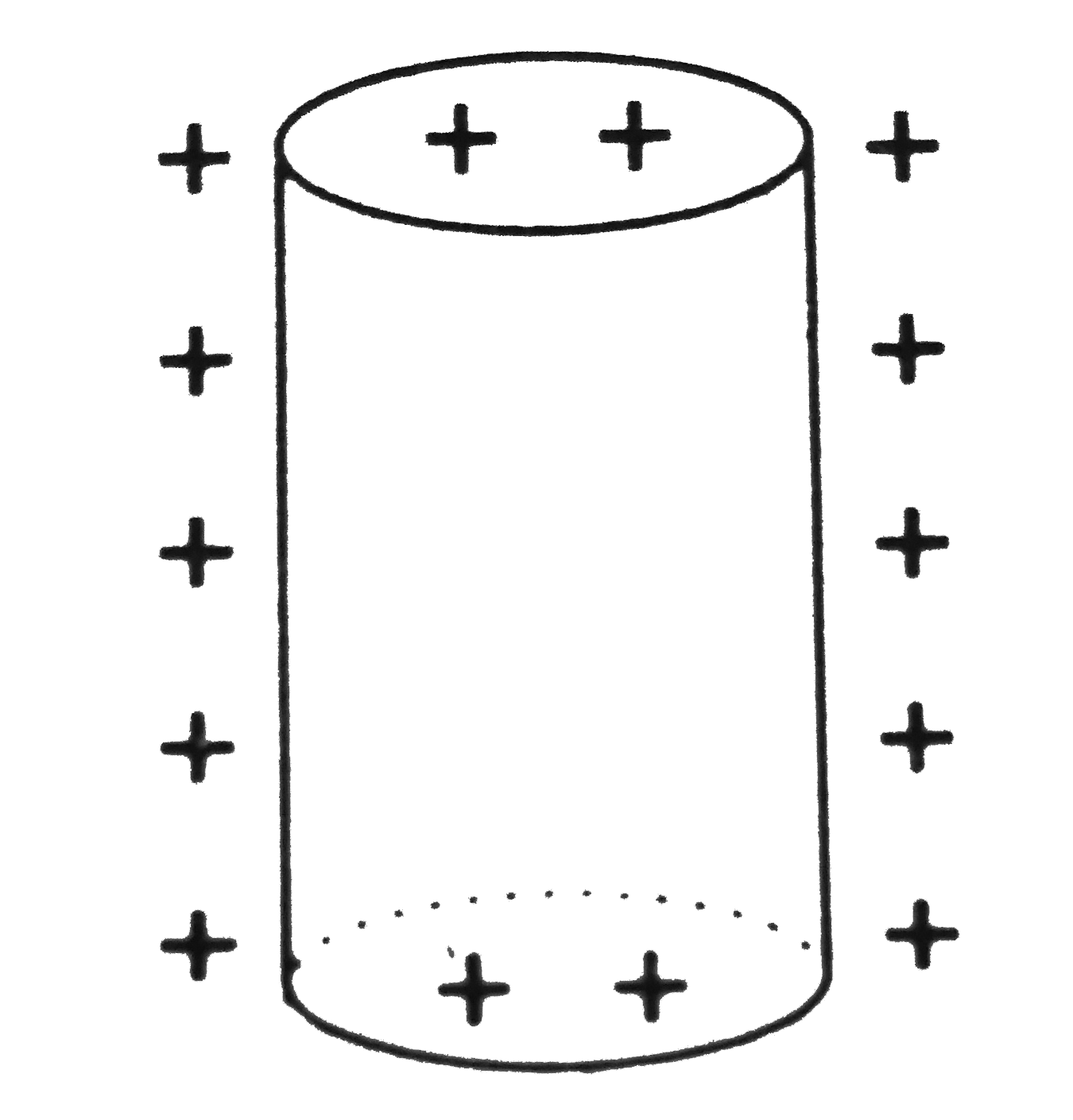
View SolutionWhich of the following figure represents the electric field lines due to a single positive charge?
View SolutionWhich of the following figure represents the field lines due to a single negative charge ?
View SolutionFigure shows the electric field lines around three point charges `A, B` and `C`. Which of the following charges are positive?
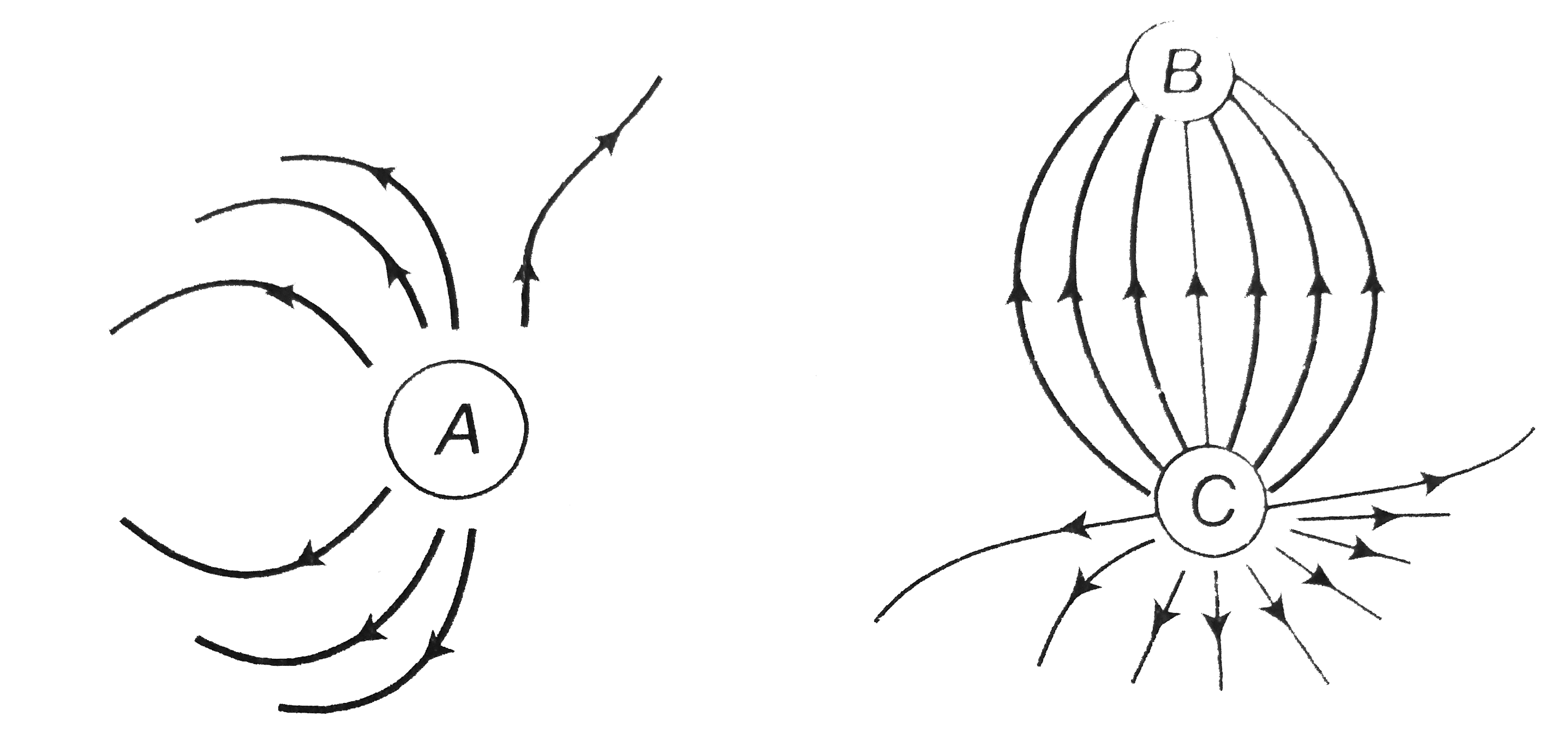
View SolutionWhich of the following represent the electric field lines dut to a combinations of two negative charges?
View SolutionWhich of the following figure represents the electronic field lines due to a combination of the one positive and one negative charge?
View SolutionWhich of the following curves shown below cannot possibly represent electrostatic field lines?
View SolutionA charge `Q` is fixed at a distance `d` in front of an infinite metal plate. The lines of force are represented by

View SolutionThe lines of force of the electric field due to two charges `q` and `Q` are sketched in the figure. State if
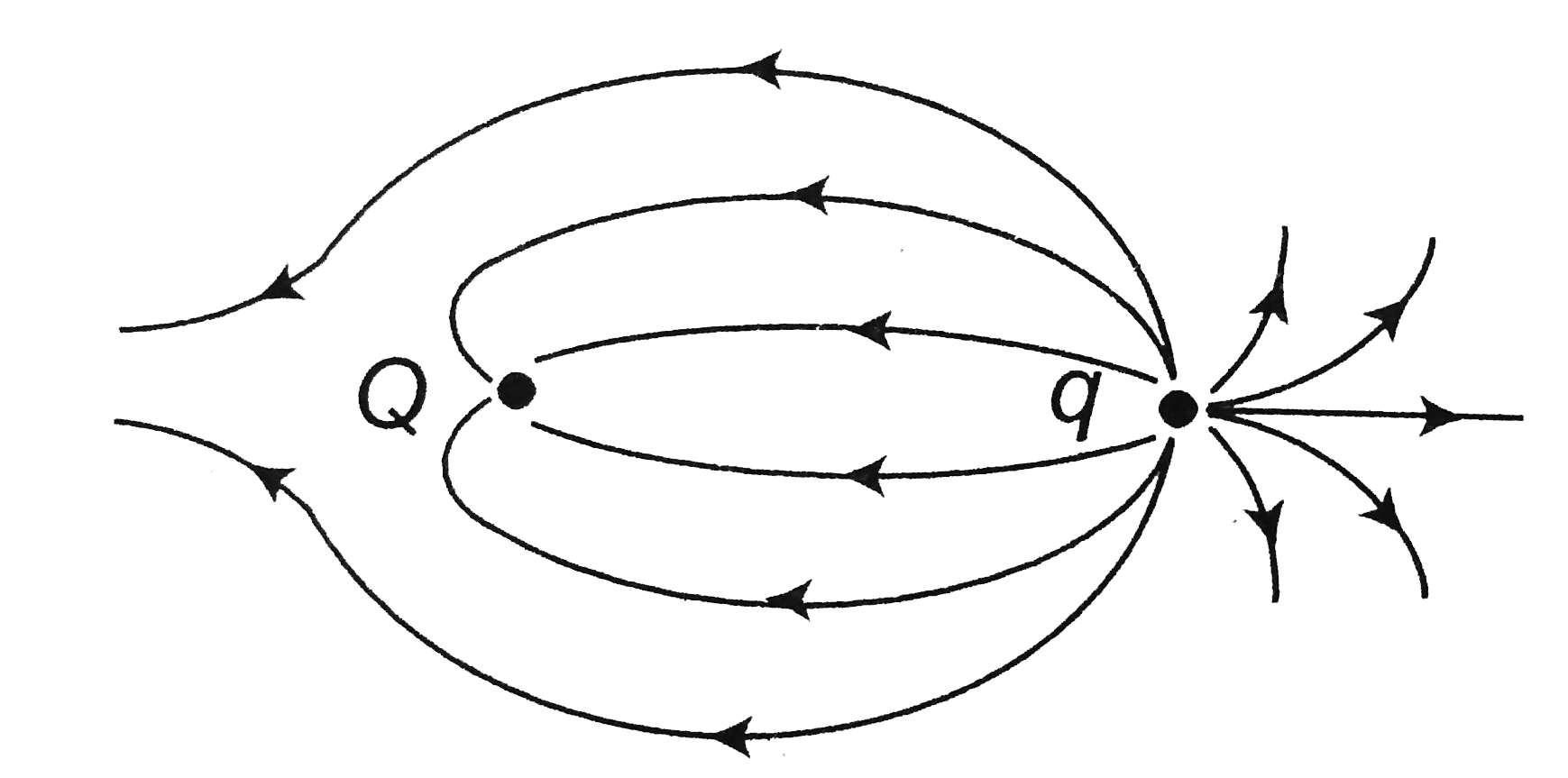
View SolutionFigure shows the electric lines of force emerging from a charged body. If the electric field at`A` and `B` are `E_(A)` and `E_(B)` respectively and if the displacement between `A` and `B` is `r` then
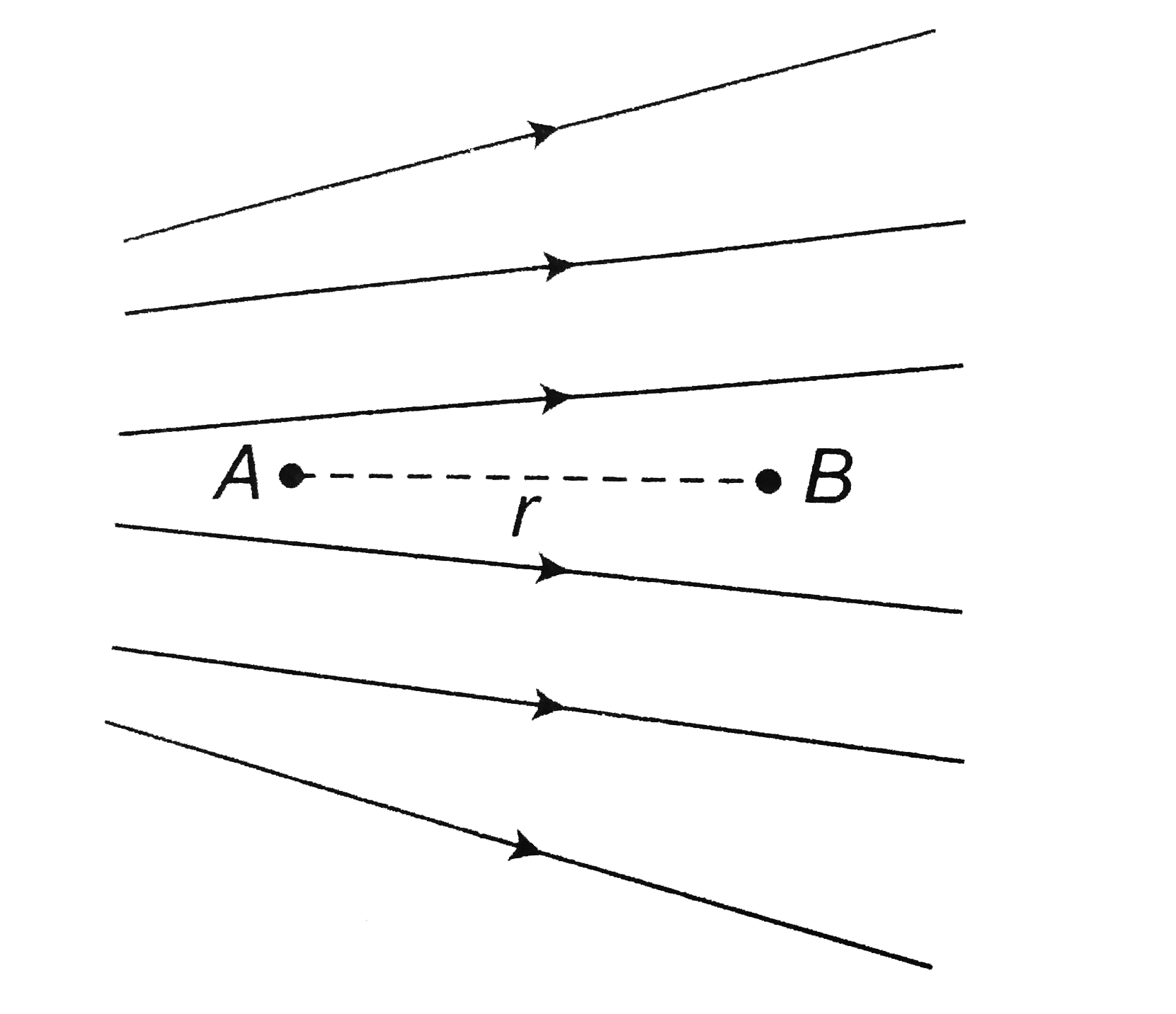
View SolutionAn uncharged sphere of metal is placed in between two charged plates as shown. The lines of force look like
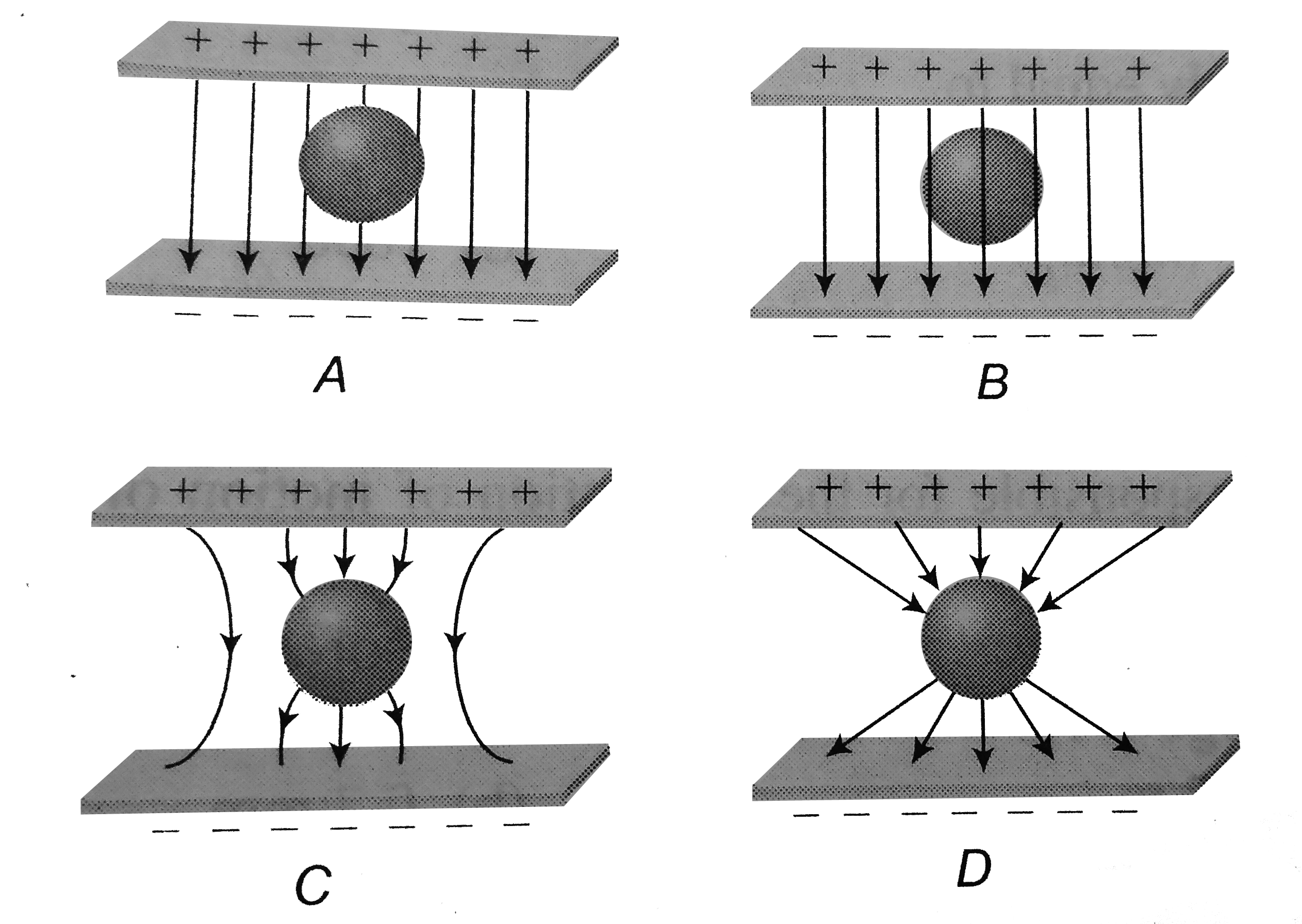
View SolutionA metallic solid is placed in a uniform electric field. The lines of force follow the path `(s)` shown in figure as

View SolutionThe figure shows some of the electric field lines corresponding to an electric field. The figure suggests
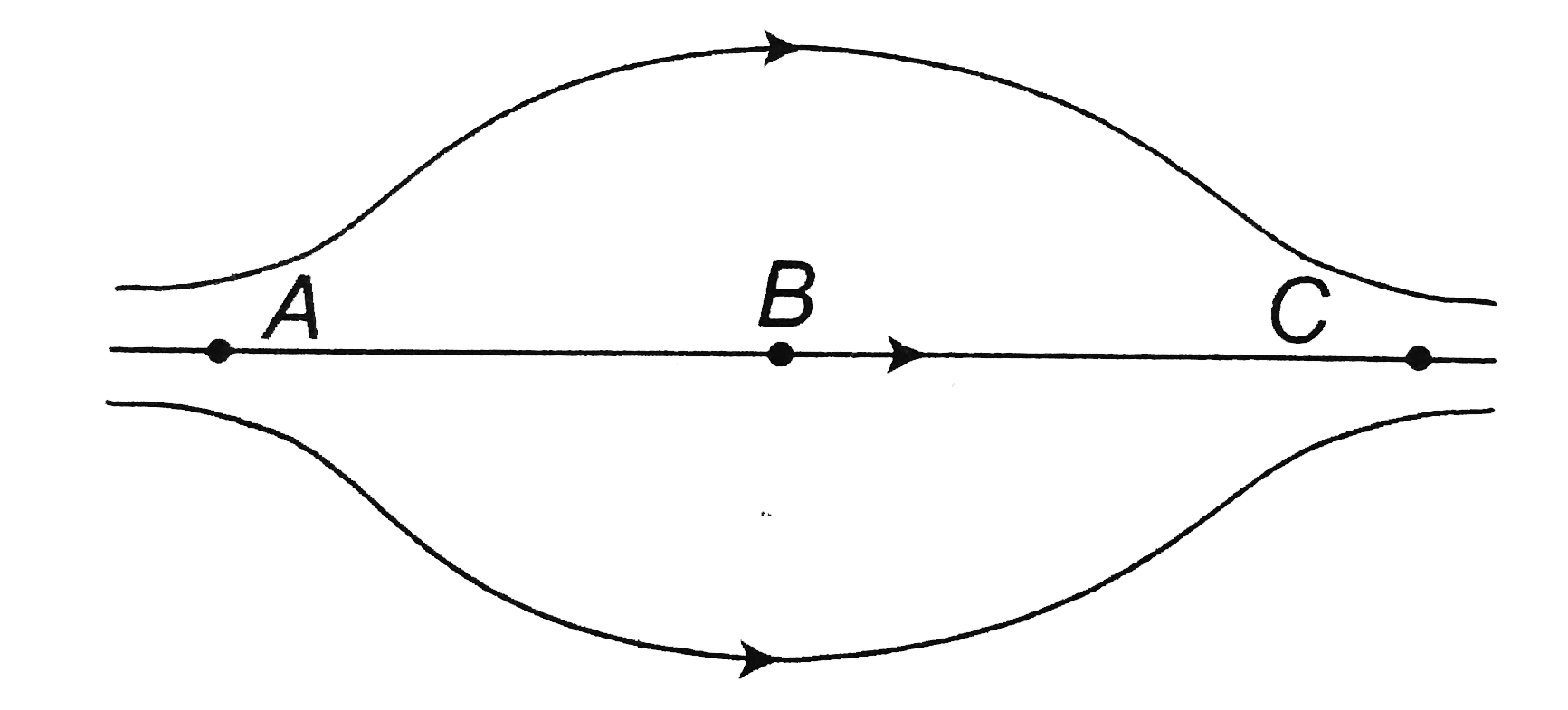
View SolutionIn a region with uniform electric field, the number of lines of force per unit area is `E`. If a spherical metallic conductor is placed in this region, the number of lines of force per unit area inside the conductor will be
View SolutionThe bob of a pendulum of mass `8 mu g` carries an electric charge of `39.2xx10^(-10)` coulomb in an electric field of `20xx10^(3)` volt/meter and it is at rest. The angle made by the pendulum with the vertical will be
View SolutionA hemisphere is uniformaly charged positively. The electric field at a point on a diameter away from the centre is directed
View SolutionA positive point charge, which is free to move, is placed inside a hollow conducting sphere with negative charge, away from its centre. It will
View SolutionA charge particle is free to move in an electric field. It will travel
View SolutionA positively charged ball hang a silk thread. We put a positive test charge `q_(0)` at a point and measure `F//q_(0)`, then it can be predicted that the electric field strength `E`.
View SolutionIf an electron has an initial velocity in a direction different from that of an electric field, then the path of the electron is
View SolutionA proton and an electron are placed in a uniform electric field. Which of the following is correct?
View SolutionAn electron enters in an electric field with its velocity in the direction of the electric lines of force. Then
View SolutionThe intensity of electric field required to balance a proton of mass `1.7xx10^(-27)kg` and charge `1.6 xx 10^(-19) C` is nearly
View SolutionThe intensity of the electric field required to keep a water drop of radius `10^(-5) cm` just suspended in air when charged with one electron is approximately
View SolutionHow many electrons should be removed from a coin of mass `1.6g`, so that it may float in an electric field of intensity of `10^(9)NC^(-1)` directed upward. (take `g= 10m//s^(2)`)
View SolutionConduction electrons are almost uniformly distributed within a conducting plate. When placed in an electric field `vec(E )`, the electric field within the plate
View SolutionA charged particle of mass `m` and charge `q` is released from rest in an electric field of constant magnitude `E`. The kinetic energy of the particle after time `t` is
View SolutionAn electron falls through a small distance in a uniform electric field of magnitude `2xx10^(4)NC^(-1)`. The direction of the field reversed keeping the magnitude unchanged and a proton falls through the same distance. The time of fall will be
View SolutionThere is a uniform electric field of strength `10^(3)V//m` along `y`-axis. A body of mass `1g` and charge `10^(-6)C` is projected into the field from origin along the positive `x`-axis with a velocity `10 m//s`. Its speed in `m//s` after `10 s` is (Neglect gravitation)
View SolutionA positively charge particle moving along `x`-axis with a certain velocity enters a uniform electric field directed along positively y-axis. Its
View SolutionAn electron of mass `m_(e )` initially at rest moves through a certain distance in a uniform electric field in time `t_(1)`. A proton of mass `m_(p)` also initially at rest takes time `t_(2)` to move through an equal distance in this uniform electric field.Neglecting the effect of gravity, the ratio of `t_(2)//t_(1)` is nearly equal to
View SolutionAn electron moving with the speed `5xx10^(6)` per sec is shot parallel to the electric field of intensity `1xx10^(3)N//C`. Field is responsible for the retardation of motion of electron. Now evaluate the distance travelled by the electron before coming to rest for an instant (mass of `e= 9xx10^(-31)Kg` charge `= 1.6xx10^(-19)C)`
View SolutionFigure shows tracks of three charged particles crossing a uniform electrostatic field with same velocities along horizontal. Give the sign of the three charges. Which particle has the highest charge to mass ratio?
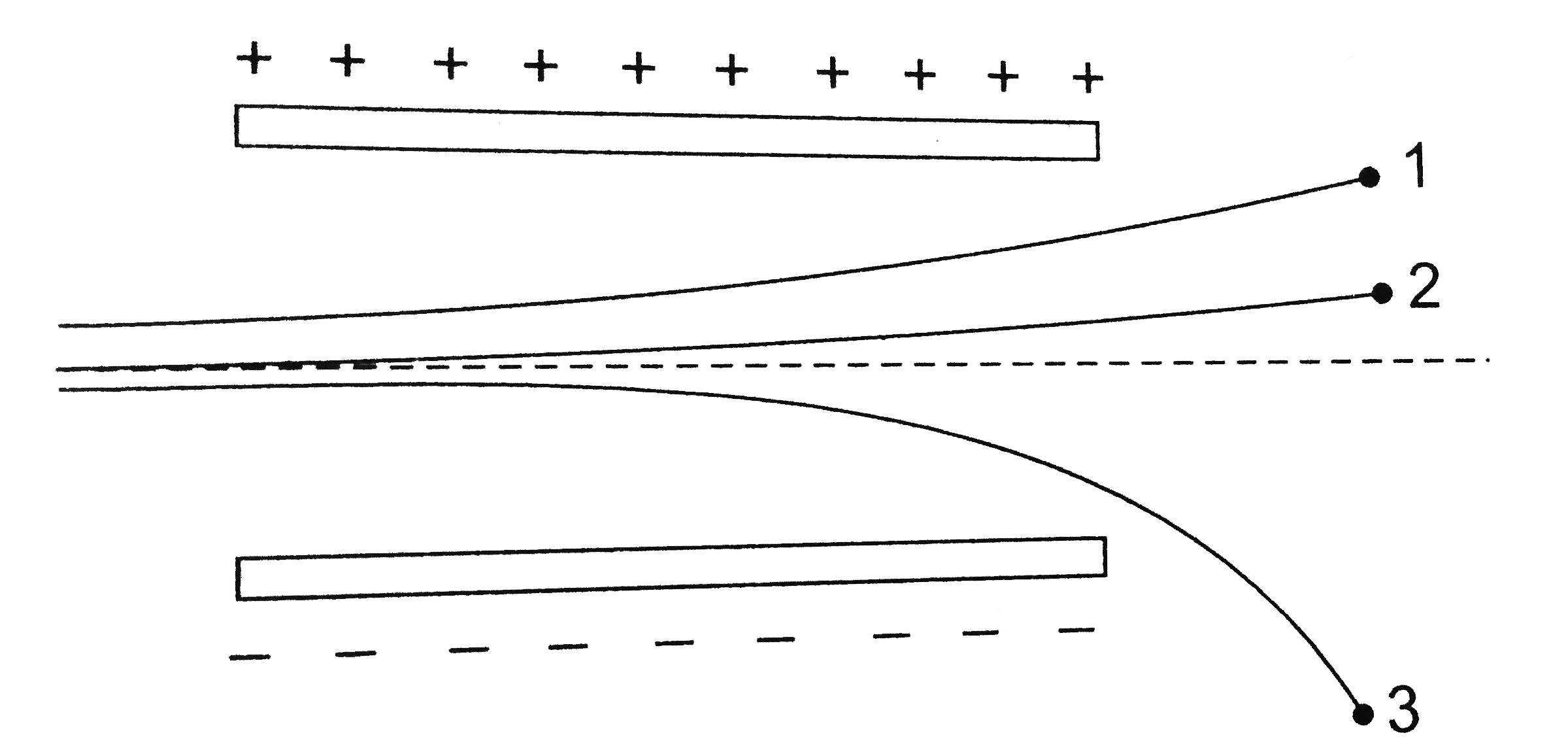
View SolutionIn the electric field shown in figure, the electric field lines on the left have twice the separation as that between those on the right. If the magnitudes of the fields at point `A` is `40NC^(-1)`, calculate the force experienced by a proton placed at point `A`. Also find the magnitude of electric field at point `B`
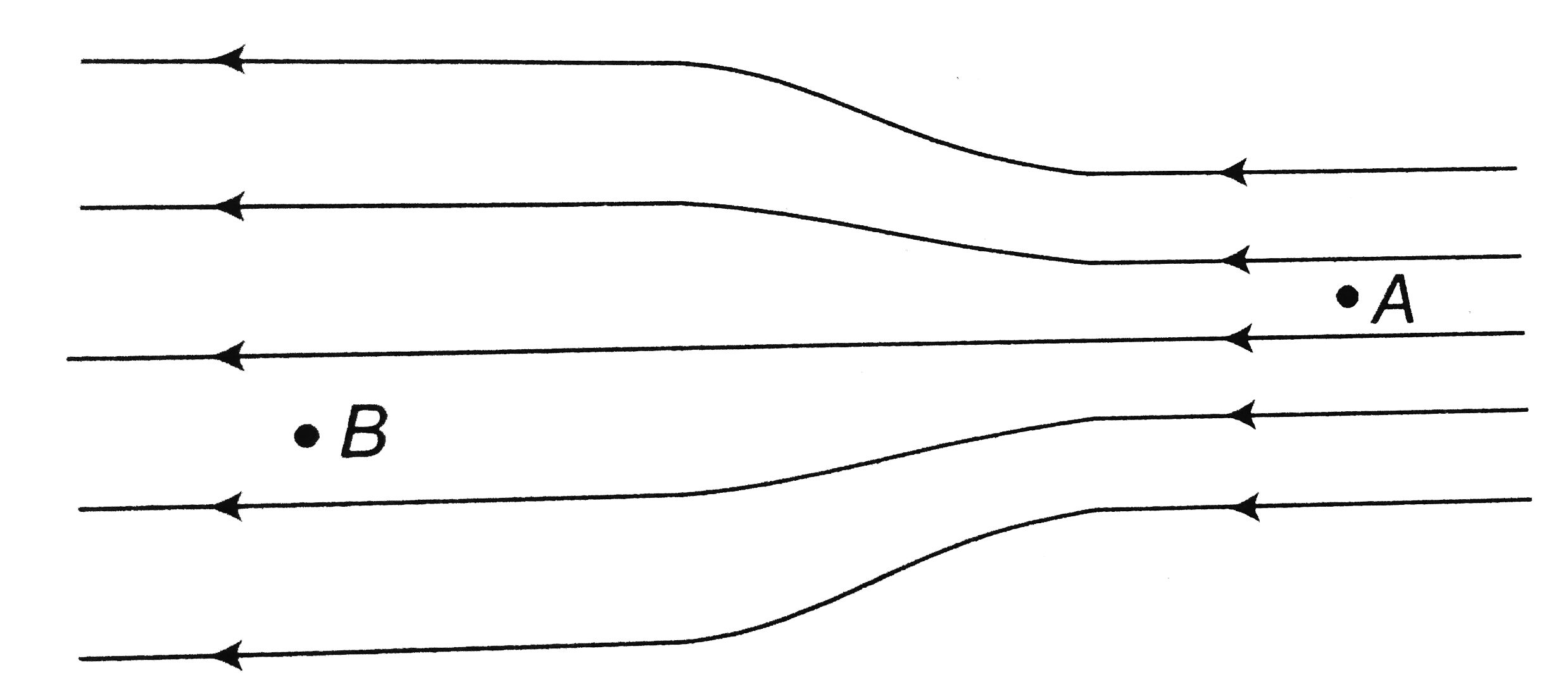
View SolutionAn electron is released with a velocity of `5xx10^(6)ms^(-1)` in an electric field of `10^(3)NC^(-1)` which has been applied so as to oppose its motion. What distance would the electron travel and how much time could it take before it is brought to rest?
View Solution
Electric Field And Motion questions and complete solutions for chapter ELECTRIC CHARGE, FIELD & FLUX of A2Z PHYSICS (HINGLISH) of Class 12